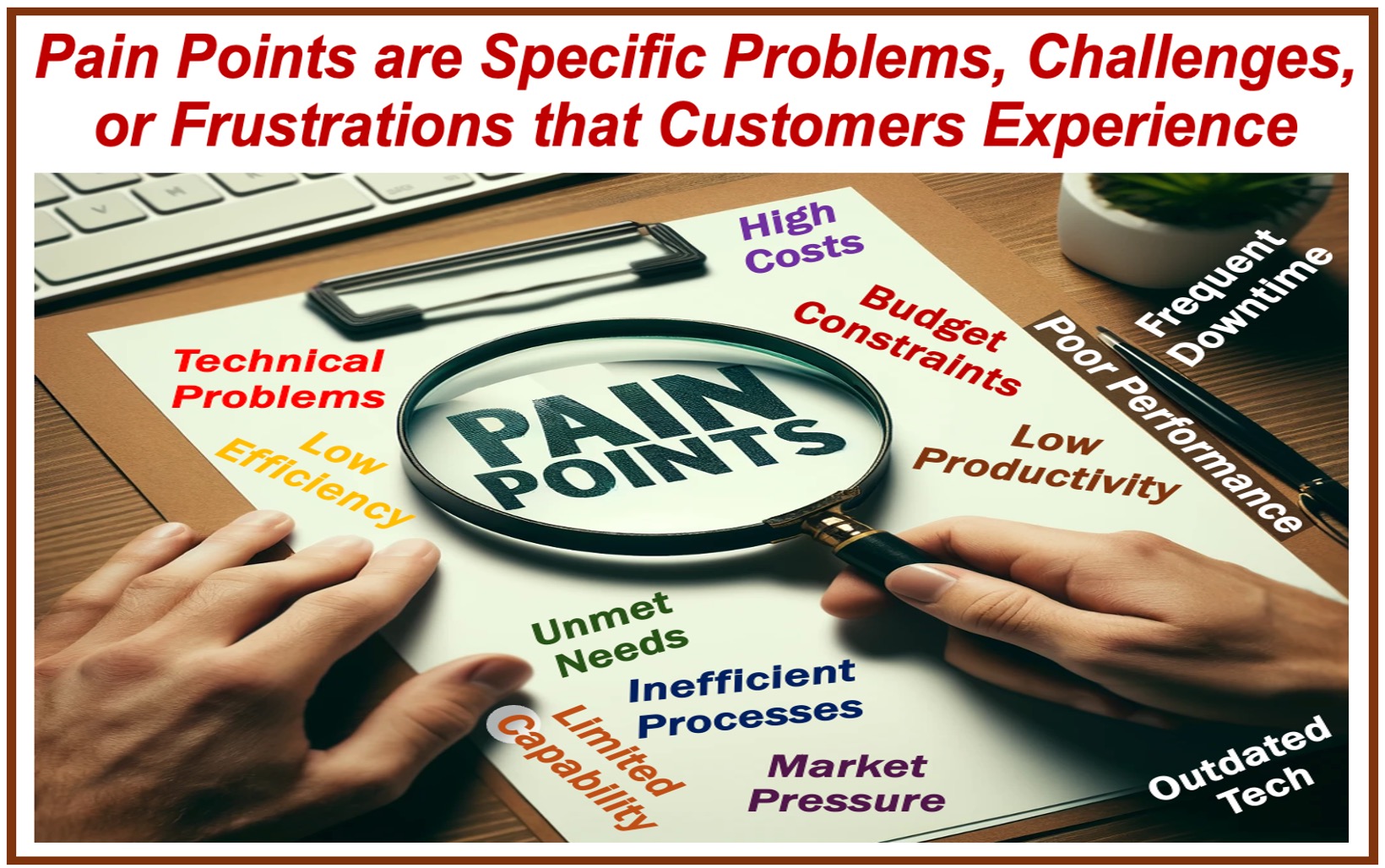Pain Points are the challenges, problems, or frustrations that your customers or prospects may face. A prospect is a potential customer who is likely to be interested in what you’re selling.
Some people know about their pain points, while others are not aware of them. Finding out what they are and talking to your prospects about them can help you sell more. Especially if you can convince them that what you are selling will help solve their problems.
The world’s best salespeople are great listeners. They listen carefully because they want to find out what people’s pain points are. When they know what they are, they explain to the prospect how their product or service can alleviate their unique problems.
For the rest of this article, when you see the term “product(s),” it also means “service(s).”
Mailshake.com says the following about the term:
“Why are people drawn to your products? It’s generally because they have a problem they need to solve, and your products offer a solution. This is exactly what pain points are: problems that your customer needs solved.”
“While everyone (and every business) is unique, there are some basic themes to people’s pain points, and these commonalities should help inform your sales strategy.”
According to Merriam-Webster.com, the term “pain points” has been used in Marketing English since 1986. Over the past decade, it has become increasingly popular.
Pain points can help you sell more
Imagine there are two people, Jane and Paul, from different companies, who are trying to sell similar products.
Jane has been trained to identify her prospects’ pain points while Paul has not.
Jane will have the following advantages over Paul:
-
Create better marketing messages
She can craft messages that directly address her prospects’ specific needs and concerns. For them, her messages are more relevant and compelling than Paul’s.
-
Improve her products
She can refine her products to better meet their needs, which tends to result in better customer satisfaction and loyalty.

-
Stand out from competitors
Understanding unique customer issues allows Jane to offer distinct solutions, setting her apart from Paul and other rivals.
-
Build stronger customer relationships
She can offer personalized solutions and support, fostering trust and a long-lasting relationship with her customers.
-
More effective upselling
Jane’s insight into her prospects’ fears, challenges, and goals allows her to recommend additional products or services that address multiple problems, increasing the value of each sale.
-
Higher conversion rate
As she can tailor her presentations more effectively than Paul, her presentation-sale ratio will be superior.
Types of Pain Points
Pain points come in all shapes and sizes. Here are a few common categories:
-
Productivity Pain Points
Think of inefficient processes or outdated technology that slow people down or waste their time.
-
Financial Pain Points
Concerns here relate to money, such as high costs, limited budgets, or unexpected expenses.
-
Process Pain Points
Challenges in this category include frustrations with complicated systems, lack of support, or unclear communication.
-
Support Pain Points
These cover issues like slow response time from customer service or a lack of helpful resources.
-
Adoption Pain Points
Examples include the challenges of integrating new products or practices into established workflows and habits, resistance to change, and the learning curve associated with new technologies or methodologies.
Finding the Pain
The following tips should help you uncover your prospects’ pain points:
-
Talk to your customers
Conduct surveys, interviews, or even casual conversations. In any interaction, your aim should be to be receptive, which means being a good listener.
Replace the outdated notion that the best salespeople are those with the ‘gift of the gab’ with the more effective ‘gift of good ears’—the ability to listen well.
-
Monitor online discussions
Find out what people are saying about your industry on forums, industry-specific news sites, influential blogs, consumer feedback platforms, or social media.
-
Analyze customer data
Where are people dropping off in your sales funnel? This can reveal bottlenecks or pain points that need addressing.
-
Evaluate Support Interactions
Review customer support tickets, chat logs, and email exchanges. This can often highlight recurring issues that customers face.
Solving Customer Pain
When you know what your prospect’s pain points are, you can then position your company or product as the solution. Show them how you can directly address specific issues.
Explain clearly how they will save time, money, or hassle, backing up your claims with success stories or testimonials.
Understanding customer pain points isn’t just good for business, it’s good for your customers. They are likely to appreciate the attention to their needs and become long-term, loyal customers.
